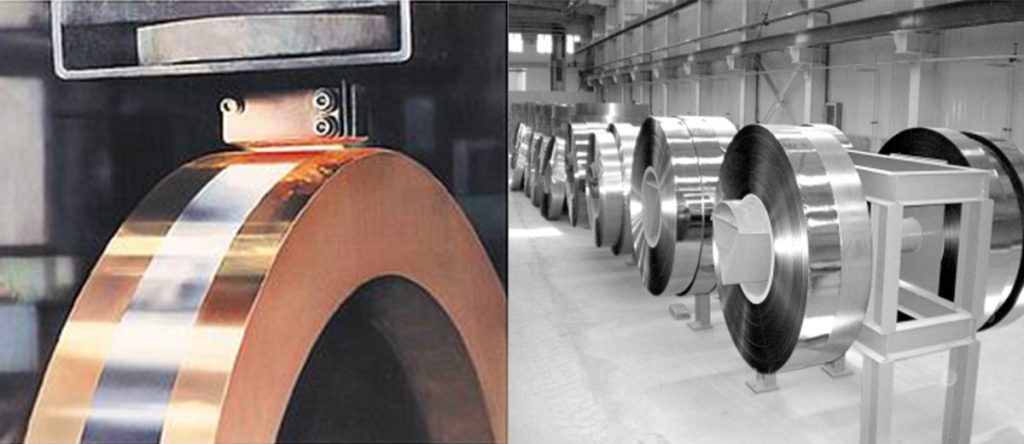Nanocrystalline and amorphous ribbons are both used in various applications, particularly in the field of magnetic materials, but they have distinct differences in their structure, properties, and applications. Here’s a detailed comparison:

1. Structure:
Amorphous Ribbon Structure : Amorphous ribbons have a non-crystalline, disordered atomic structure. This means there is no long-range order in the arrangement of atoms.
Amorphous Ribbon Formation: They are typically produced by rapid solidification of molten metal, which prevents the formation of a crystalline structure.
Nanocrystalline Ribbon Structure: Nanocrystalline ribbons have a structure that consists of very small crystalline grains, typically in the nanometer range (1-100 nm), embedded in an amorphous matrix.
Nanocrystalline Ribbon Formation: They are usually produced by controlled crystallization of amorphous ribbons through annealing. The annealing process allows the formation of tiny crystalline grains within the amorphous matrix.
2. Magnetic Properties:
Amorphous Ribbon Magnetic Properties: Amorphous ribbons generally exhibit soft magnetic properties, with low coercivity and high magnetic permeability. They have a relatively high saturation magnetization.
Amorphous Ribbon Hysteresis Loss: They tend to have higher hysteresis losses compared to nanocrystalline materials.
Nanocrystalline Ribbon Magnetic Properties: Nanocrystalline ribbons also exhibit soft magnetic properties but often with even lower coercivity and higher permeability than amorphous ribbons. They can achieve very low core losses, making them highly efficient for high-frequency applications.
Nanocrystalline Ribbon Hysteresis Loss: They typically have lower hysteresis losses due to the fine crystalline structure, which reduces magnetic domain wall pinning.
3. Mechanical Properties:
Amorphous Ribbon Mechanical Properties: Amorphous ribbons are generally brittle and can be prone to cracking or breaking under mechanical stress.
Nanocrystalline Ribbon Mechanical Properties: Nanocrystalline ribbons can be slightly less brittle than amorphous ribbons due to the presence of crystalline grains, but they are still relatively fragile.
4. Thermal Stability:
Amorphous Ribbon Thermal Stability: Amorphous ribbons are less thermally stable and can crystallize at elevated temperatures, which can degrade their magnetic properties.
Nanocrystalline Ribbon Thermal Stability: Nanocrystalline ribbons are more thermally stable than amorphous ribbons because they have already undergone a controlled crystallization process. However, excessive heat can still lead to grain growth and degradation of properties.
5. Applications:
Amorphous Ribbon Applications: Commonly used in applications such as transformers, inductors, and magnetic sensors where moderate magnetic properties are sufficient.
Nanocrystalline Ribbon Applications: Preferred in high-performance applications such as high-frequency transformers, magnetic amplifiers, and advanced magnetic sensors where low core loss and high permeability are critical.
6. Cost:
Amorphous Ribbon Cost: Generally less expensive to produce compared to nanocrystalline ribbons.
Nanocrystalline Ribbon Cost: More expensive due to the additional processing steps required to achieve the nanocrystalline structure.
Summary of Two types of Ribbons:
Amorphous Ribbons are characterized by their disordered atomic structure, moderate magnetic properties, and lower cost. They are suitable for applications where high performance is not critical.
Nanocrystalline Ribbons have a fine crystalline structure within an amorphous matrix, offering superior magnetic properties, especially in terms of low core loss and high permeability. They are used in high-performance applications but come at a higher cost.
Both materials have their specific niches, and the choice between them depends on the specific requirements of the application, including magnetic performance, thermal stability, and cost considerations.
